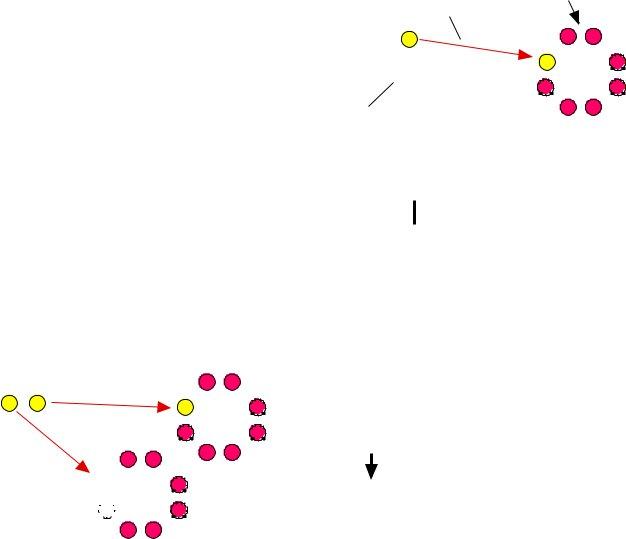Drawing Ionic Bonds Worksheet Answers
| Bonding Basics - Ionic Bonds | Name _______________________ | ||||||
| Complete the chart for each element. | |||||||
| Element | # of Protons | # of Electrons | # of Valence Electrons | Oxidation Number | |||
| Sodium | |||||||
| Chlorine | |||||||
| Beryllium | |||||||
| Fluorine | |||||||
| Lithium | |||||||
| Oxygen | |||||||
| Phosphorus | |||||||
Follow your teacher's directions to complete each ionic bond.
(1) Potassium + Fluorine
(2) Magnesium + Iodine
T. TRIMPE 2002

| Bonding Basics - Ionic Bonds | Answer Key/Teacher Notes |
Complete the chart for each element.
| Element | # of Protons | # of Electrons | # of Valence Electrons | Oxidation Number | ||
| Sodium | 11 | 11 | | 1 | 1+ | |
| Chlorine | 17 | 17 | | 7 | 1- | |
| Beryllium | 4 | 4 | | 2 | 2+ | |
| Fluorine | 9 | 9 | | 7 | 1- | |
| Lithium | 3 | 3 | | 1 | 1+ | |
| Oxygen | 8 | 8 | | 6 | 2- | |
| Phosphorus | 15 | 15 | | 5 | 3- | |
NOTE: I have the students use a red pen/pencil to change the # of electrons to the amount it would be if the valence electrons were removed or added. They can see the difference between the number of protons (+) and electrons
Follow your teacher's directions to complete each ionic bond.
| Step 2 | |||
| (1) Potassium + Fluorine | Step 3 | ||
| 1- Write the symbols for each element. | K | F | |
| 2 - Use Fruity Pebbles (or other cereal/candy with more | |||
| than one color) to create the Lewis structure for each. | Step 1 | ||
3 - Draw an arrow (or more if needed) to show the
transfer of electrons and move the cereal to the new location.
4 - Determine the charge for each ion and write the formula.
5 - Make sure the sum of the oxidation numbers is zero and write the chemical formula.
6 - Have the students use a pencil or crayon to draw the electrons as they remove the pieces of cereal.
K would have a charge of 1+ since it lost an electron
Fluorine would have a charge of 1- since it gained an electron.
(2) Magnesium + Iodine
Mg would have a charge of 2+ since it lost two electrons.
Each I ion would have a charge of 1- since each gained an electron. A subscript "2" is used to show that two ions were used in the bond.
Students will start with one magnesium and one iodine atom. Since the oxidation numbers must equal zero, they will need to add another iodine atom.
T. TRIMPE 2002

(3) Sodium + Oxygen
| Na | O | Na1+ 2 O 2- |
| Na | Na2O | |
| Students will start with one sodium and one | ||
oxygen atom. Since the oxidation numbers must equal zero, they will need to add another sodium atom.
(4) Sodium + Chlorine
Each Na ion would have a charge of 1+ since each lost an electron. A subscript "2" is used to show that two ions were used in the bond.
The O ion would have a charge of 2- since it gained two electrons.
Na Cl
Na would have a charge of 1+ since it lost an electron
Cl would have a charge of
1- since it
gained an electron.
(5) Calcium + Chlorine
Ca would have a charge of 2+ since it lost two electrons.
Each Cl ion would have a charge of 1- since each gained an electron. A subscript "2" is used to show that two ions were used in the bond.
(6) Aluminum + Chlorine
The Al ion would have a charge of 3+
since it lost three electrons.
Each Cl ion would have a charge of 1- since each gained an electron. A subscript "3" is used to show
that three ions were used in the bond.
T. TRIMPE 2002
Source: https://formspal.com/pdf-forms/other/ionic-bonds-worksheet-answers/
0 Response to "Drawing Ionic Bonds Worksheet Answers"
Post a Comment